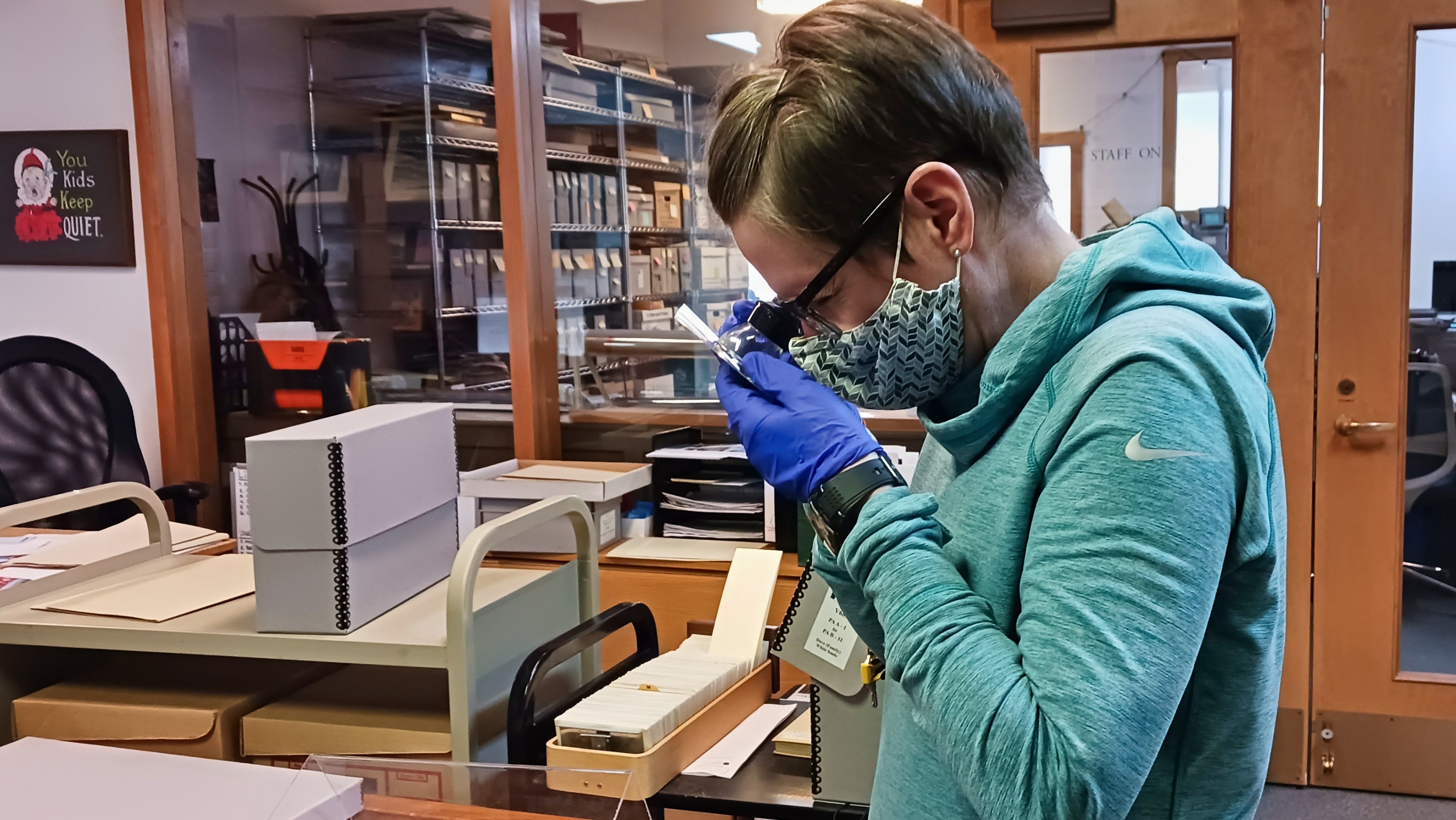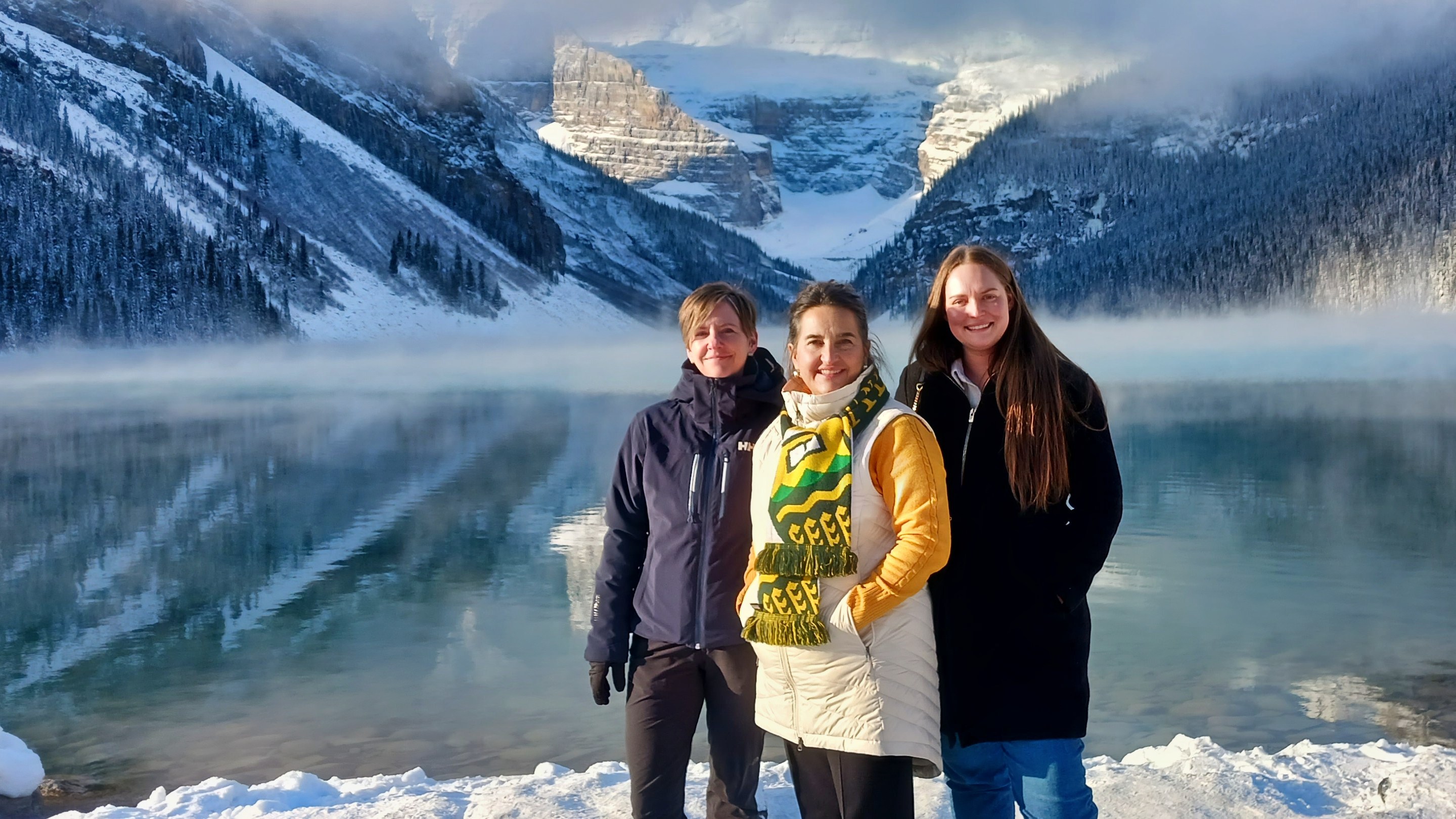When Lyndsay Conrad dove into her archival research on early 20th-century ski history in Alberta, she found women were missing in the standard narratives, yet leap out in old University of Alberta yearbooks from the 1930s.
“We were finding that you need to dig a little bit deeper to find evidence about women,” says Conrad, a first-year graduate student in the Faculty of Kinesiology, Sport, and Recreation.
Now, Conrad and her colleagues on the Ski Like a Girl research team at the U of A are working to ensure the history of women and girls in Nordic skiing is remembered and heard.
“Women were skiers; they were also leaders and builders of the ski clubs, ski industry and tourism,” says PearlAnn Reichwein, professor in the Faculty of Kinesiology, Sport, and Recreation and research team lead.
“We are bringing women and girls to the forefront of these projects,” says Reichwein. “In that way, we’re working to reshape the history of skiing and Western Canada.”
In a recent paper, Reichwein analyzes the Canadian Birkebeiner’s origins, dating back to a frigid winter day for the first loppet in 1985. Women made up half of the grassroots organizing committee, and women and girls participated in the loppet.
The full 55 km course represents the tale of legendary Norwegian Birkebeiners transporting the infant Prince Haakon Haakonson. Outdoor educator Glenda Hanna, formerly with the Faculty of Physical Education and Recreation at the U of A, was the first person to carry her own baby while skiing the event.
Reichwein argues that the Canadian Birkebeiner was crucial in negotiating terrain for the winter sport and conservation stewardship, creating broader impacts for sustainable heritage tourism within the area now included in the Beaver Hills Biosphere east of Edmonton.
“It began with a ski instructor’s love and passion for getting everybody involved in cross-country skiing,” she says.
“Ski instructors from the Riverside cross-country ski school, friends, families and many others volunteered their time to make the Canadian Birkebeiner idea come to life.”
The loppet — a mass participation cross-country ski event with food and celebration — was a vessel that carried the founding organizers’ sport-for-all philosophy, according to Reichwein. Its 40th anniversary is next year.
With a focus on Nordic skiing, the Ski Like a Girl research team hopes to fill a gap in the history of Canadian skiing and inspire equity, inclusion and diversity in sport and active living.
An unequal jump
Ski jumping is at the centre of PhD student Charlotte Mitchell’s research and 12-year athletic career with the Altius Nordic Ski Club in Calgary.
Through her research, Mitchell discovered the rich history of women’s ski jumping dating back to the late 1800s, when the sport was a popular spectator event that included women despite barriers to competition.
“Women were encouraged not to ski jump,” says Mitchell. “Their bodies were used against them, to not allow women to compete or train in sport in general, and in ski jumping.”
Despite those limits, women’s ski jumping grew as a sport over more than a century of advocacy, including efforts by Mitchell as a teenager who joined a lawsuit against the 2010 Vancouver Olympic Organizing Committee by elite women ski jumpers in protest of a men’s-only Olympic event.
Using autoethnographic research methods including creative nonfiction writing, photography and videography, Mitchell shares her plaintiff and ski jumping history to connect with broader exclusion experiences in sport for women and girls in Nordic skiing.
“Canada is under the assumption that things are more equal here,” says Mitchell. “Having the Olympic Winter Games held here with no women’s event in ski jumping was really a shock.”
Mitchell hopes her work will inspire sport communities to push policy boundaries and prioritize coming together to generate change in sport and society.
“This fight is definitely not over.”
Sport for all
Photo evidence found in the University of Alberta archives and original Evergreen and Gold yearbooks from the U of A Library helped Conrad’s research efforts to share the history of the university’s Varsity Ski Club.
“Nordic skiing in the 1930s was a very lively scene for outdoor winter recreation, and it took place in the river valley,” says Conrad. “Clubs built their own cabins and ski jumps, and had competitions as well as recreational Sunday tours starting right from campus.”

A key tenet of the club was the “sport for all” ethic, which emphasized getting as many students out skiing as possible, Conrad explains.
Archival work led Conrad to point out that the Varsity Ski Club also served as an incubator for early female leaders on campus, helping women gain skills and leadership experience.
Alumni include Peggy O’Meara, a former ski club secretary treasurer who became the first female physician in the Canadian Armed Forces, and Marjorie Bowker, the first female family court judge in Alberta.
“They were leaders in sport at the university and then became leaders in their field,” says Conrad.
“I thought that was pretty amazing.”
As part of this year’s Canadian Birkebeiner Ski Festival, PearlAnn Reichwein, Lyndsay Conrad and Charlotte Mitchell will present research exploring Nordic ski history and the Canadian Birkie.
